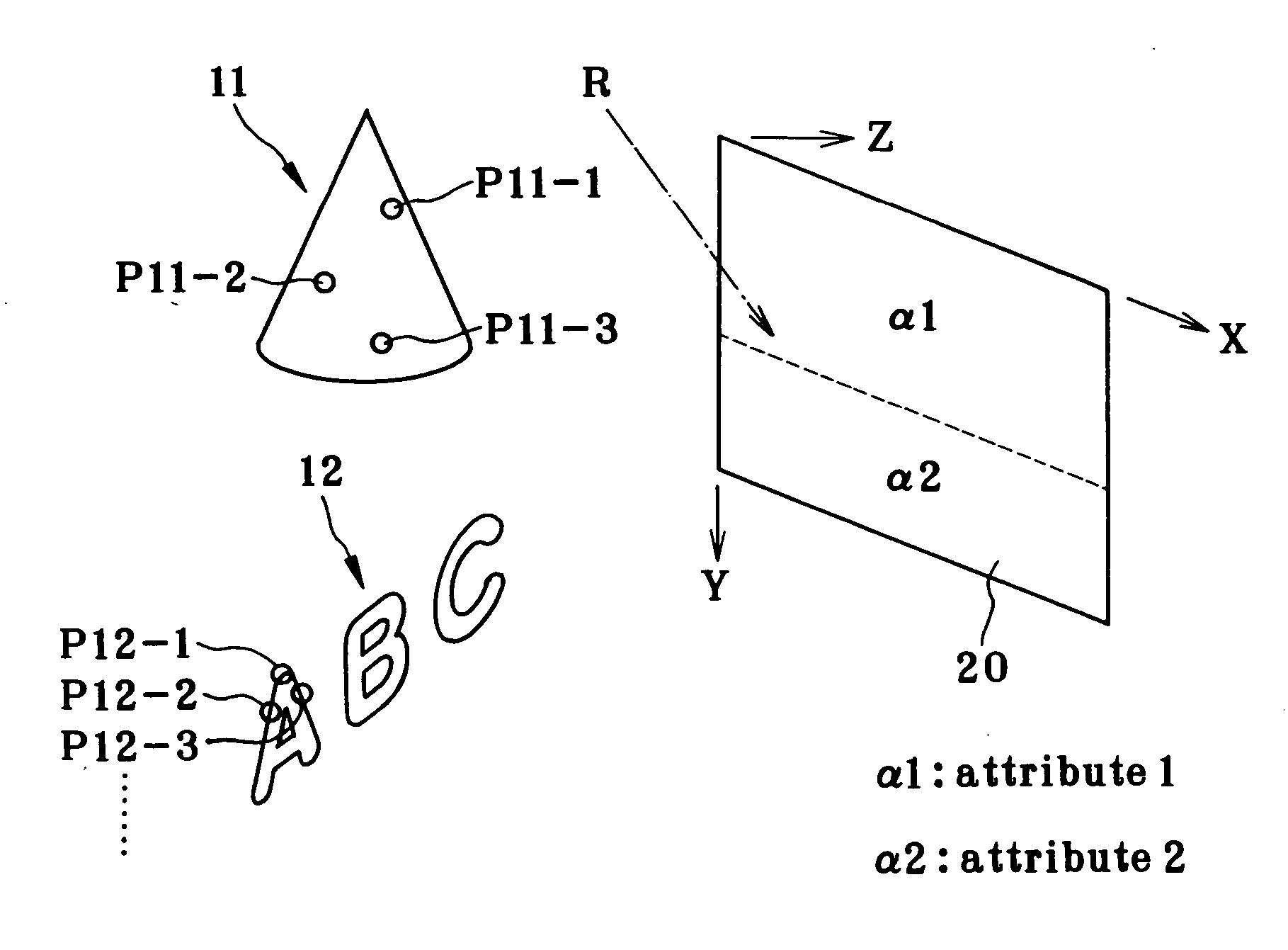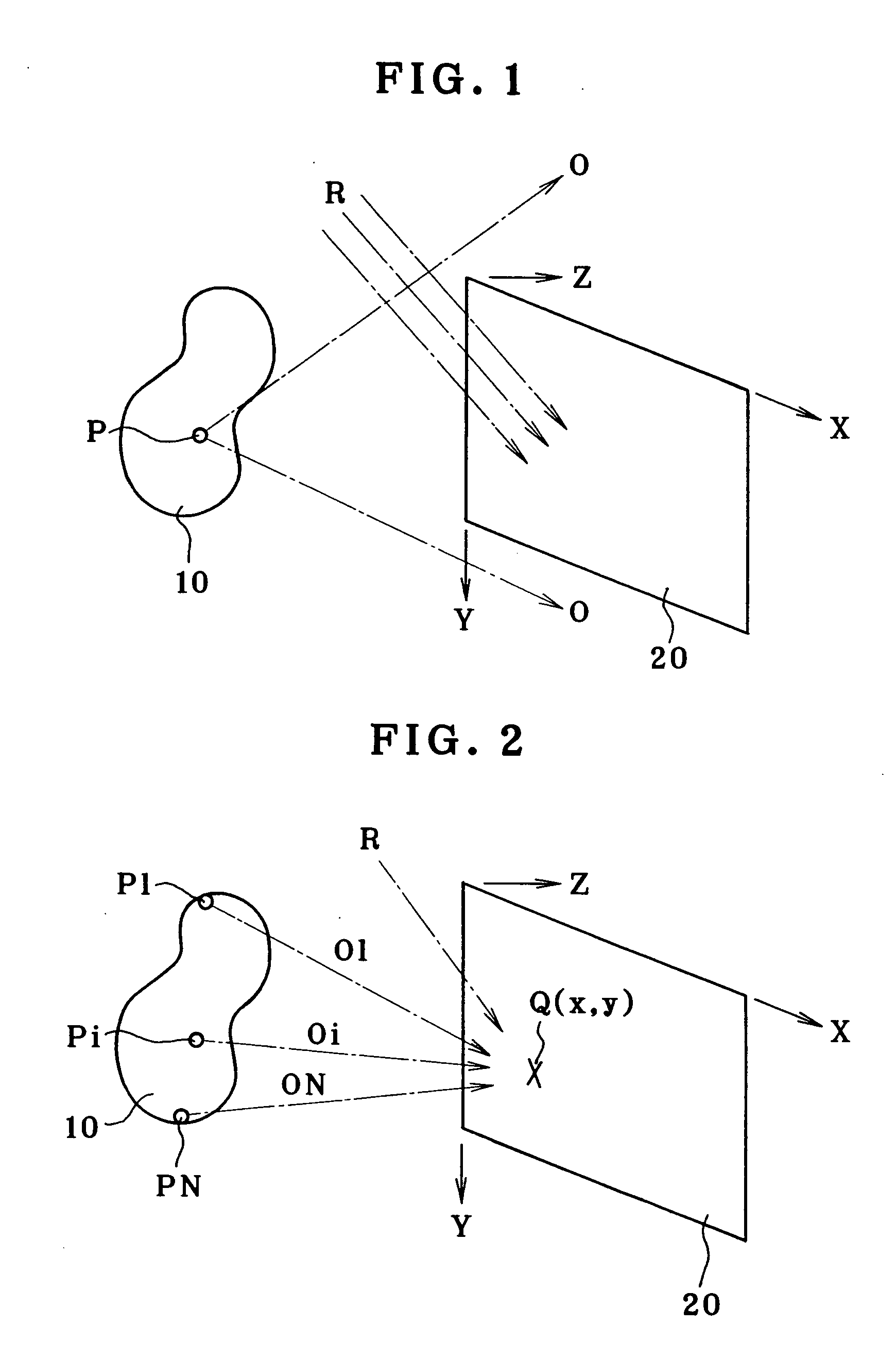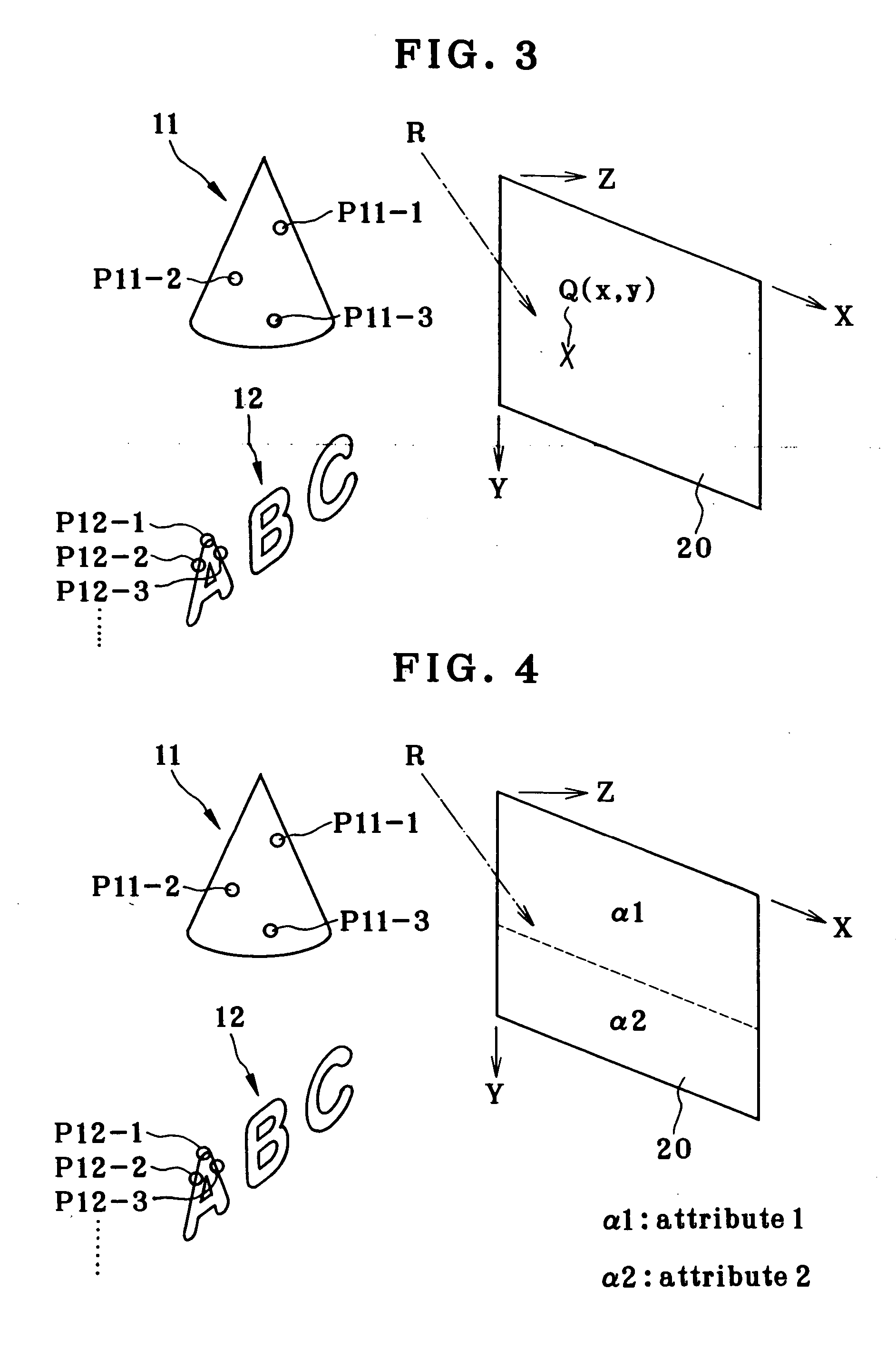Computer-generated hologram fabrication process, and hologram-recorded medium
a technology of computer-generated holograms and holograms, applied in the field of hologram recorded media, can solve the problems of counterfeiting, content decoding of authenticating information recorded as micro-characters, and diffraction grating authentication information, and is vulnerable to copying
- Summary
- Abstract
- Description
- Claims
- Application Information
AI Technical Summary
Problems solved by technology
Method used
Image
Examples
Embodiment Construction
[0085] The present invention is now explained specifically with reference to the preferred embodiments shown in the accompanying drawings.
§1. Fundamental Principles of the Invention
[0086]FIG. 1 is illustrative of the principles of how to fabricate a general hologram, showing how to record an original image 10 in the form of interference fringes on a recording surface 20. For convenience of explanation, assume here that the recording surface 20 is placed on an XY plane on the XYZ three-dimensional coordinate system defined as shown in FIG. 1. When the optical technique is used, an actual object or its real or virtual image is provided as the original image 10. Object light O emanating from an arbitrary point P on the original image 10 propagates toward the whole recording surface 20. On the other hand, the recording surface 20 is irradiated with reference light R, so that interference fringes of object light O and reference light R are recorded on the recording surface 20.
[0087] T...
PUM
 Login to View More
Login to View More Abstract
Description
Claims
Application Information
 Login to View More
Login to View More - R&D
- Intellectual Property
- Life Sciences
- Materials
- Tech Scout
- Unparalleled Data Quality
- Higher Quality Content
- 60% Fewer Hallucinations
Browse by: Latest US Patents, China's latest patents, Technical Efficacy Thesaurus, Application Domain, Technology Topic, Popular Technical Reports.
© 2025 PatSnap. All rights reserved.Legal|Privacy policy|Modern Slavery Act Transparency Statement|Sitemap|About US| Contact US: help@patsnap.com



